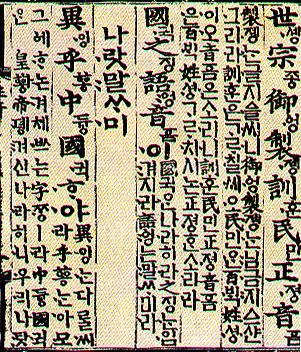|
Modern Korean language is descended from the language of the Silla Kingdom, which unified the peninsula in the seventh century. Both Korean and Japanese possess what is sometimes called "polite" or "honorific" language, the use of different levels of speech in addressing persons of superior, inferior, or equal rank. These distinctions depend both on the use of different vocabulary and upon basic structural differences in the words employed. For example, in Korean the imperative "go" can be rendered kara when speaking to an inferior or a child, kage when speaking to an adult inferior, kaseyo when speaking to a superior, and kasipsio when speaking to a person of still higher rank. The proper use of polite language, or levels of polite speech, is an extremely complex and subtle matter. The Korean language, like Japanese, is extremely sensitive to the nuances of hierarchical human relationships. Two persons who meet for the first time are expected to use the more distant or formal terms, but they will shift to more informal or "equal" terms if they become friends. Younger people invariably use formal language in addressing elders; the latter will use "inferior" terms in "talking down" to those who are younger. The Korean language may be written using a mixture of Chinese ideograms (hancha) and a native Korean alphabet known as han'gul, or in han'gul alone, much as in a more limited way Indo-European languages sometimes write numbers using Arabic symbols and at other times spell numbers out in their own alphabets or in some combination of the two forms. Han'gul was invented by scholars at the court of King Sejong (1418-50), not solely to promote literacy among the common people as is sometimes claimed, but also, as Professor Gari K. Ledyard has noted, to assist in studies of Chinese historical phonology. Although the Korean and Chinese languages are not related in terms of grammatical structure, more than 50 percent of all Korean vocabulary is derived from Chinese loanwords, a reflection of the cultural dominance of China over 2 millennia. In many cases there are two words--a Chinese loanword and an indigenous Korean word--meaning the same thing. The Chinese-based word in Korean sometimes has a bookish or formal flavor. Koreans select one or the other variant to achieve the proper register in speech or in writing, and to make subtle distinctions of meaning in accordance with established usage. |

|